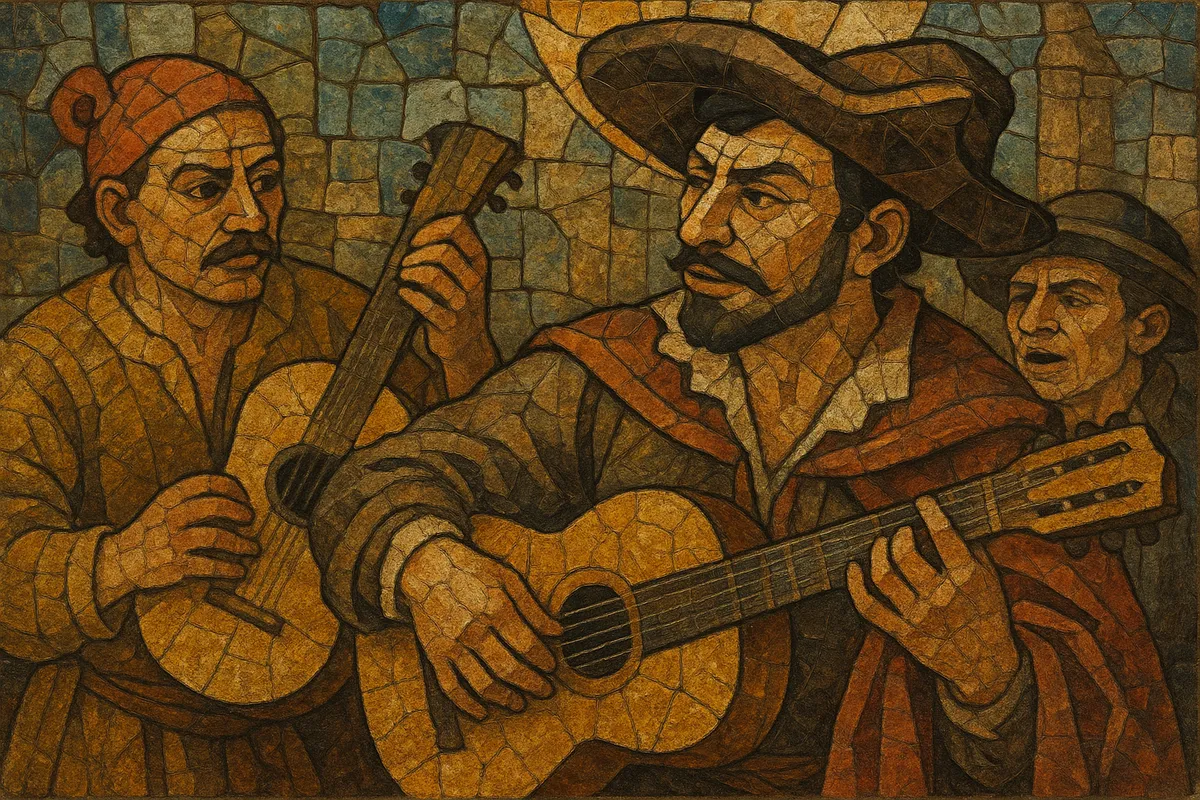Jácara is a lively Spanish Golden Age song-dance associated with picaresque, rough-and-tumble subject matter and theatrical interludes. It often portrays swaggering rogues and underworld life using witty, slang-laden verses (including germanía, the argot of thieves).
Musically, jácaras combine a driving, strummed rhythmic feel with frequent hemiola (the Spanish sesquialtera interplay of 3/4 and 6/8), and were performed both vocally and instrumentally—especially on the five-course Baroque guitar. In the theatre (comedias and early zarzuelas) a jácara could function as an intermedio, while in domestic and courtly settings it appeared as a standalone song or a characterful guitar piece.
Jácara emerged in 17th-century Spain as part of the vibrant musical-theatrical culture of the Siglo de Oro. The genre drew on Baroque aesthetics, popular ballad traditions, and the festive, vernacular energy of Spanish song and dance. Early references place it in the context of comedias and court entertainments, where it served as a comic, earthy foil to more formal numbers.
By the mid-to-late 1600s, jácaras were common as sung interludes and as instrumental guitar pieces. Their hallmark rasgueado (strummed) textures, buoyed by sesquialtera (hemiola) patterns, made them ideal for dance and spectacle. Lyrics often adopted a playful, streetwise tone, celebrating braggarts and ruffians in colorful, slang-heavy poetry. Composers for the stage and salon—along with leading Baroque guitarists—left numerous examples.
Though fashions shifted in the 18th century, the jácara remained in circulation, particularly in the guitar repertoire and in theatrical contexts tied to early zarzuela. Its rhythmic language and swagger fed into later Spanish idioms, while its picaresque spirit echoed in subsequent popular and theatrical song traditions.
Jácara’s mix of theatricality, strummed propulsion, and hemiola helped shape the Spanish Baroque guitar tradition and fed forward into zarzuela practice and, more distantly, aspects of Andalusian/Spanish popular styles. Today it is performed by early-music ensembles and guitarists seeking the vivid dance energy and characterful rhetoric of the Spanish Baroque.


